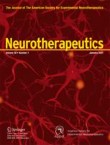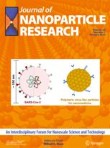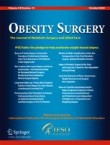|
Πέμπτη 19 Νοεμβρίου 2020
Urea entrapment in cellulose acetate microparticles obtained by electrospraying
Overlapping Molecular Pathways Leading to Autism Spectrum Disorders, Fragile X Syndrome, and Targeted Treatments
|
BDNF rs6265 Variant Alters Outcomes with Levodopa in Early-Stage Parkinson’s Disease
|
Green synthesis of CuFeS 2 nanoparticles using mimosa leaves extract for photocatalysis and supercapacitor applications
|
Laparoscopic Greater Curvature Plication for the Treatment of Obesity: a Systematic Review
|
A Randomized, Controlled Trial Comparing the Impact of a Low-Calorie Ketogenic vs a Standard Low-Calorie Diet on Fat-Free Mass in Patients Receiving an Elipse™ Intragastric Balloon Treatment
|
Antimicrobial Stewardship in the Intensive Care Unit: The Role of Biomarkers, Pharmacokinetics, and Pharmacodynamics
|
Physical Activity, Medical Home, and Health Behavior Counseling Among Adolescents with Special Health Care Needs: NSCH 2016–2017
|
Seeking international consensus on approaches to primary tumour treatment in Ewing sarcoma
|
Preoperative accelerated radiotherapy combined with chemotherapy in a defined cohort of patients with high risk soft tissue sarcoma: a Scandinavian Sarcoma Group study
|
Solitary extrapleural fibrous tumor with hepatic bilobar metastases: multimodal approach treatment
|
Δημοφιλείς αναρτήσεις
-
Abstract Kenaf is a multipurpose crop, but a lack of genetic information hinders genetic and molecular research. In this study, we aimed t...
-
As demonstrated by the market reactions to downgrades of various sovereign credit ratings in 2011, the credit rating agencies occupy an impo...
-
HPV vaccine now funded for boys Scoop.co.nz “Most countries who have to date introduced HPV vaccine have focused on the cervical canc...
-
Multi-organ segmentation of the head and neck area: an efficient hierarchical neural networks approach Abstract Purpose In radiation therapy...
-
ORIGINAL ARTICLES Cyclooxygenase-2 and estrogen receptor-β as possible therapeutic targets in desmoid tumors p. 47 Rasha A Khairy DOI :10....
-
Lichtenstein intervention is currently the classic model of the regulated treatment of inguinal hernias by direct local approach. This “tens...
-
Umbrella reviews: what they are and why we need them Cystic echinococcosis in unaccompanied minor refugees from Afghanistan and the Middle E...
-
Spindle cell/pleomorphic lipoma is an uncommonly encountered benign neoplasm that is usually found in the subcutaneous tissues. Rare cases r...
-
Related Articles New alkylresorcinol metabolites in spot urine as biomarkers of whole grain wheat and rye intake in a Swedish middle-a...







